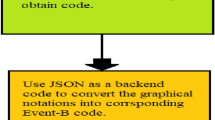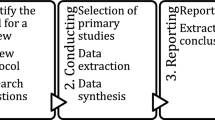Abstract
Designing complex and critical systems needs a methodology to ensure the correctness of their specifications. Within an overall approach which considers the validation of SysML designs, this paper proposes a methodology for verifying SysML requirements on activity diagrams. The objective is to define a complete process to formalize and verify SysML functional requirements related to activity diagrams. Our contributions lie, first, in the definition of AcTRL (Activity Temporal Requirement Language), a new language for the formalization of functional requirements at SysML level. Second, in the proposed verification methodology which is guided by the  verify
verify relationships between SysML requirements and activity diagrams. The verification is enabled by formalizing SysML activities with hierarchical coloured Petri nets (HCPNs) and by automatically translating SysML requirements expressed on AcTRL into temporal logic. Our methodology takes into account the hierarchical structure of SysML activities and their relations with SysML requirements to provide a modular and incremental verification. A case study for a ticket vending machine is presented to illustrate the different steps and the benefits of the proposed methodology.
relationships between SysML requirements and activity diagrams. The verification is enabled by formalizing SysML activities with hierarchical coloured Petri nets (HCPNs) and by automatically translating SysML requirements expressed on AcTRL into temporal logic. Our methodology takes into account the hierarchical structure of SysML activities and their relations with SysML requirements to provide a modular and incremental verification. A case study for a ticket vending machine is presented to illustrate the different steps and the benefits of the proposed methodology.



















Similar content being viewed by others
References
Alavi H, Avrunin G, Corbett J, Dillon L, Dwyer M, Pasareanu C. Specification patterns. http://patterns.projects.cis.ksu.edu. Accessed 22 May 2016
Autili M, Inverardi P, Pelliccione P (2007) Graphical scenarios for specifying temporal properties: an automated approach. Autom Softw Eng 14(3):293–340
Berard B, Bidoit M, Finkel A, Laroussinie F, Petit A, Petrucci L, Schnoebelen P (2010) Systems and software verification: model-checking techniques and tools, 1st edn. Springer Publishing Company, Incorporated, Berlin
Cheng A, Christensen S, Mortensen KH (1997) Model checking Coloured Petri Nets-exploiting strongly connected components. DAIMI Report Series 26(519). doi:10.7146/dpb.v26i519.7048
Damm W, Harel D (2001) LSCs: breathing life into message sequence charts. Form Methods Syst Des 19(1):45–80
Debbabi M, Hassaine F, Jarraya Y, Soeanu A, Alawneh L (2010) Verification and validation in systems engineering: assessing UML/SysML design models, 1st edn. Springer-Verlag New York, Inc, New York
Dwyer MB, Avrunin GS, Corbett JC (1999) Patterns in property specifications for finite-state verification. In: Proceedings of the international conference on software engineering, pp 411–420. IEEE
Engels G, Soltenborn C, Wehrheim H (2007) Analysis of UML activities using dynamic meta modeling. In: Formal methods for open object-based distributed systems. Springer, Berlin, pp 76–90
Eshuis R (2006) Symbolic model checking of UML activity diagrams. ACM Trans Softw Eng Methodol 15(1):1–38
Eshuis R, Wieringa R (2002) Verification support for workflow design with UML activity graphs. In: Proceedings of the 24th international conference on software engineering. ACM, pp 166–176
Eshuis R, Wieringa R (2004) Tool support for verifying UML activity diagrams. IEEE Trans Softw Eng 30(7):437–447
Farail P, Goutillet P, Canals A, Le Camus C, Sciamma D, Michel P, Crégut X, Pantel M (2006) The TOPCASED project: a toolkit in open source for critical aeronautic systems design. Ingenieurs de l’Automobile 781:54–59
Foures D, Albert V, Pascal JC, Nketsa A (2012) Automation of SysML activity diagram simulation with model-driven engineering approach. In: Proceedings of the 2012 symposium on theory of modeling and simulation—DEVS integrative M&S symposium, TMS/DEVS ’12. Society for Computer Simulation International, San Diego, pp 11:1–11:6
Jensen K, Kristensen LM, Wells L (2007) Coloured Petri nets and CPN tools for modelling and validation of concurrent systems. Int J Softw Tools Technol Transf 9(3):213–254
Kanso B, Taha S (2013) Temporal constraint support for OCL. In: Software language engineering. Springer, Berlin, pp 83–103
Knorreck D, Apvrille L, de Saqui-Sannes P (2011) TEPE: a SysML language for time-constrained property modeling and formal verification. ACM SIGSOFT Softw Eng Notes 36(1):1–8
Linhares MV, de Oliveira RS, Farines J-M, Vernadat F (2007) Introducing the modeling and verification process in SysML. In: Emerging technologies and factory automation (ETFA) IEEE conference. IEEE, pp 344–351
Michael W, Ekkart K (2003) The Petri net markup language. In: Petri net technology for communication-based systems. Springer, Berlin, pp 124–144
Nejati S, Sabetzadeh M, Falessi D, Briand L, Coq T (2012) A SysML-based approach to traceability management and design slicing in support of safety certification: framework, tool support, and case studies. Inf Softw Technol 54(6):569–590
OMG (2010) OMG Systems Modeling Language (OMG SysML\(^{{\rm TM}}\)) Version 1.2 Downloadable from http://www.omg.org
Rahim M, Boukala-Ioualalen M, Hammad A (2014) Petri nets based approach for modular verification of SysML requirements on activity diagrams. In: PNSE’14, a satellite event of Petri Nets 2014 and ACSD 2014, Tunis, Tunisia, pp 233–248
Rahim M, Hammad A, Ioulalen M (2013) Modular and distributed verification of SysML activity diagrams. In: MODELSWARD 2013, 1st international conference on model-driven engineering and software development, Barcelona, Spain, pp 202–205
Siamak R (2008) Formal modeling and verification of software models. In: Proceedings of World academy of science, engineering and technology, pp 276–282
Staines TS (2008) Intuitive mapping of UML 2 activity diagrams into fundamental modeling concept Petri net diagrams and colored Petri nets. In: 15th annual IEEE international conference and workshop on the engineering of computer based systems, 2008. ECBS 2008. IEEE, pp 191–200
Störrle H (2005) Semantics and verification of data flow in UML 2.0 activities. Electron Notes Theor Comput Sci 127(4):35–52
Ziemann P, Gogolla M (2003) OCL extended with temporal logic. In: Perspectives of system informatics. Springer, Berlin, pp 351–357
Author information
Authors and Affiliations
Corresponding author
Rights and permissions
About this article
Cite this article
Rahim, M., Hammad, A. & Ioualalen, M. A methodology for verifying SysML requirements using activity diagrams. Innovations Syst Softw Eng 13, 19–33 (2017). https://doi.org/10.1007/s11334-016-0281-y
Received:
Accepted:
Published:
Issue Date:
DOI: https://doi.org/10.1007/s11334-016-0281-y




